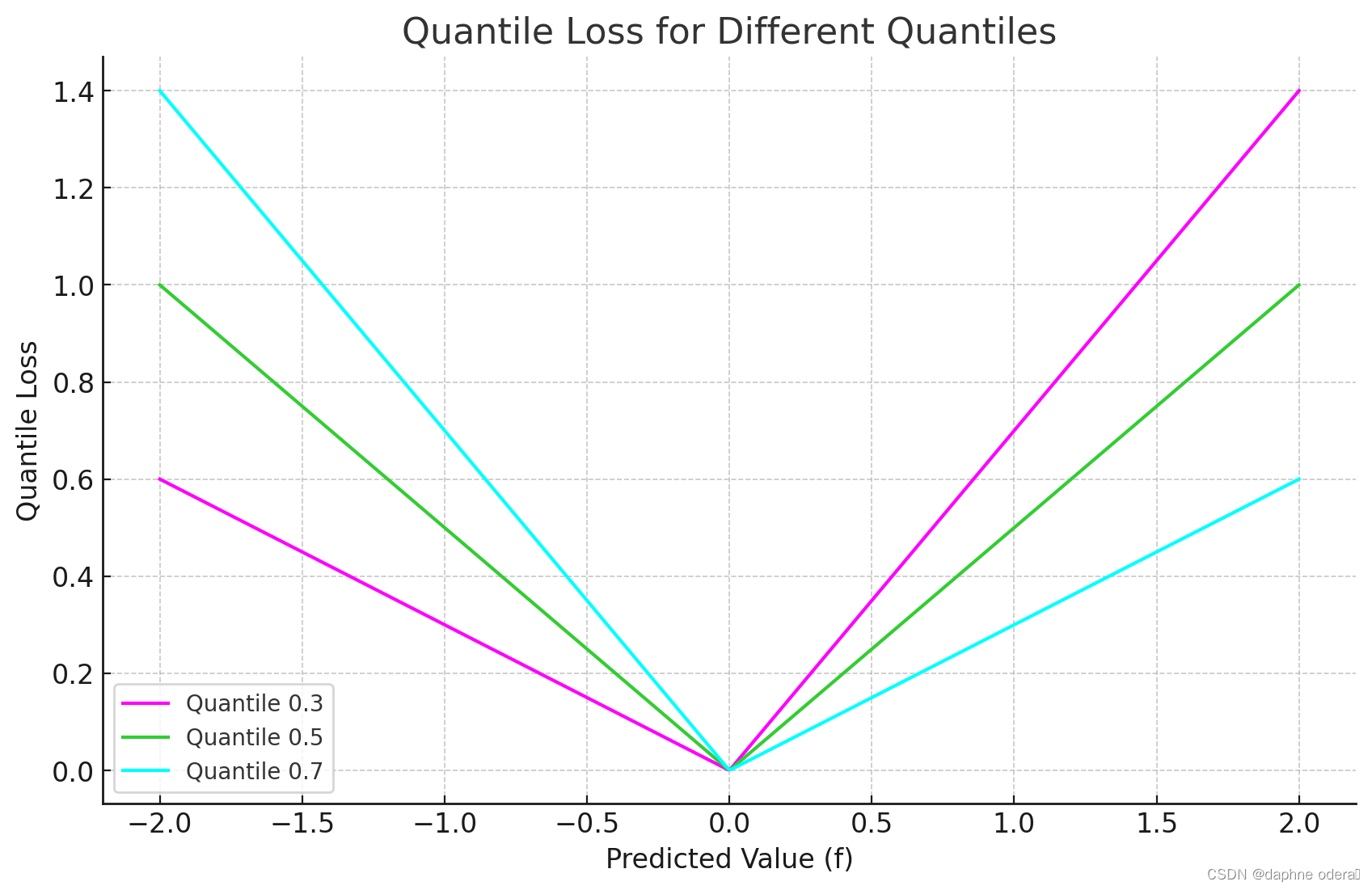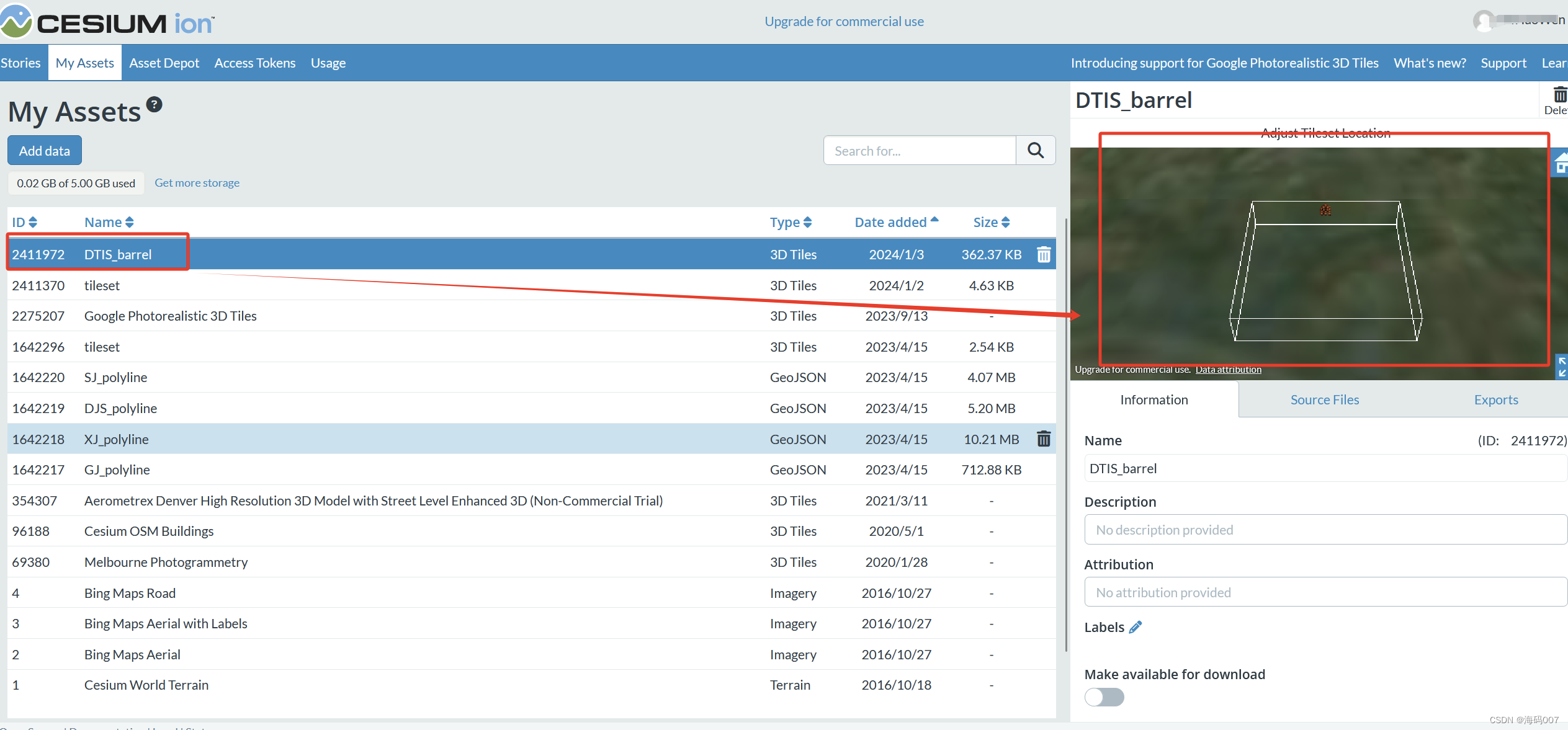也许你两个都不知道,也许你除了isEmpty/isNotEmpty/isNotBlank/isBlank外,并不知道还有isAnyEmpty/isNoneEmpty/isAnyBlank/isNoneBlank的存在, 他们都是org.apache.commons.lang3.StringUtils;这个工具类中的方法
isEmpty系列
StringUtils.isEmpty()
是否为空。可以看到 " " 空格是会绕过这种空判断,因为是一个空格,并不是严格的空值,会导致 isEmpty(" ")=false
StringUtils.isEmpty(null) = true
StringUtils.isEmpty("") = true
StringUtils.isEmpty(" ") = false
StringUtils.isEmpty(“bob”) = false
StringUtils.isEmpty(" bob ") = false
源码分析:
/**** <p>NOTE: This method changed in Lang version 2.0.* It no longer trims the CharSequence.* That functionality is available in isBlank().</p>** @param cs the CharSequence to check, may be null* @return {@code true} if the CharSequence is empty or null* @since 3.0 Changed signature from isEmpty(String) to isEmpty(CharSequence)*/public static boolean isEmpty(final CharSequence cs) {return cs == null || cs.length() == 0;}针对源码的分析,只可以看到对字符串的null判断和长度是否为0进行判断,例如带有空格的空字符串,长度是不为0的并且不为空,所以是可以通过的。
StringUtils.isNotEmpty()
相当于不为空 , = !isEmpty()
源码分析:
public static boolean isNotEmpty(final CharSequence cs) {return !isEmpty(cs);}StringUtils.isAnyEmpty()
是否有一个为空,只有一个为空,就为true
StringUtils.isAnyEmpty(null) = true
StringUtils.isAnyEmpty(null, “foo”) = true
StringUtils.isAnyEmpty("", “bar”) = true
StringUtils.isAnyEmpty(“bob”, “”) = true
StringUtils.isAnyEmpty(" bob ", null) = true
StringUtils.isAnyEmpty(" ", “bar”) = false
StringUtils.isAnyEmpty(“foo”, “bar”) = false
源码分析:
/*** @param css the CharSequences to check, may be null or empty* @return {@code true} if any of the CharSequences are empty or null* @since 3.2*/public static boolean isAnyEmpty(final CharSequence... css) {if (ArrayUtils.isEmpty(css)) {return true;}for (final CharSequence cs : css){if (isEmpty(cs)) {return true;}}return false;}StringUtils.isNoneEmpty()
相当于!isAnyEmpty(css) , 必须所有的值都不为空才返回true
/** * <p>Checks if none of the CharSequences are empty ("") or null.</p> * * <pre> * StringUtils.isNoneEmpty(null) = false * StringUtils.isNoneEmpty(null, "foo") = false * StringUtils.isNoneEmpty("", "bar") = false * StringUtils.isNoneEmpty("bob", "") = false * StringUtils.isNoneEmpty(" bob ", null) = false * StringUtils.isNoneEmpty(" ", "bar") = true * StringUtils.isNoneEmpty("foo", "bar") = true * </pre> * * @param css the CharSequences to check, may be null or empty * @return {@code true} if none of the CharSequences are empty or null * @since 3.2 */
public static boolean isNoneEmpty(final CharSequence... css) {
return !isAnyEmpty(css);
}isBank系列
StringUtils.isBlank()
是否为真空值(空格或者空值)
StringUtils.isBlank(null) = true
StringUtils.isBlank("") = true
StringUtils.isBlank(" ") = true
StringUtils.isBlank(“bob”) = false
StringUtils.isBlank(" bob ") = false
/*** <p>Checks if a CharSequence is whitespace, empty ("") or null.</p>* @param cs the CharSequence to check, may be null* @return {@code true} if the CharSequence is null, empty or whitespace* @since 2.0* @since 3.0 Changed signature from isBlank(String) to isBlank(CharSequence)*/public static boolean isBlank(final CharSequence cs) {int strLen;if (cs == null || (strLen = cs.length()) == 0) {return true;}for (int i = 0; i < strLen; i++) {if (Character.isWhitespace(cs.charAt(i)) == false) {return false;}}return true;}StringUtils.isNotBlank()
是否真的不为空,不是空格或者空值 ,相当于!isBlank();
public static boolean isNotBlank(final CharSequence cs) {return !isBlank(cs);}StringUtils.isAnyBlank()
是否包含任何真空值(包含空格或空值)
StringUtils.isAnyBlank(null) = true
StringUtils.isAnyBlank(null, “foo”) = true
StringUtils.isAnyBlank(null, null) = true
StringUtils.isAnyBlank("", “bar”) = true
StringUtils.isAnyBlank(“bob”, “”) = true
StringUtils.isAnyBlank(" bob ", null) = true
StringUtils.isAnyBlank(" ", “bar”) = true
/*** <p>Checks if any one of the CharSequences are blank ("") or null and not whitespace only..</p>* @param css the CharSequences to check, may be null or empty* @return {@code true} if any of the CharSequences are blank or null or whitespace only* @since 3.2*/public static boolean isAnyBlank(final CharSequence... css) {if (ArrayUtils.isEmpty(css)) {return true;}for (final CharSequence cs : css){if (isBlank(cs)) {return true;}}return false;}StringUtils.isNoneBlank()
是否全部都不包含空值或空格
StringUtils.isNoneBlank(null) = false
StringUtils.isNoneBlank(null, “foo”) = false
StringUtils.isNoneBlank(null, null) = false
StringUtils.isNoneBlank("", “bar”) = false
StringUtils.isNoneBlank(“bob”, “”) = false
StringUtils.isNoneBlank(" bob ", null) = false
StringUtils.isNoneBlank(" ", “bar”) = false
StringUtils.isNoneBlank(“foo”, “bar”) = true
/*** <p>Checks if none of the CharSequences are blank ("") or null and whitespace only..</p>* @param css the CharSequences to check, may be null or empty* @return {@code true} if none of the CharSequences are blank or null or whitespace only* @since 3.2*/public static boolean isNoneBlank(final CharSequence... css) {return !isAnyBlank(css);}StringUtils的其他方法
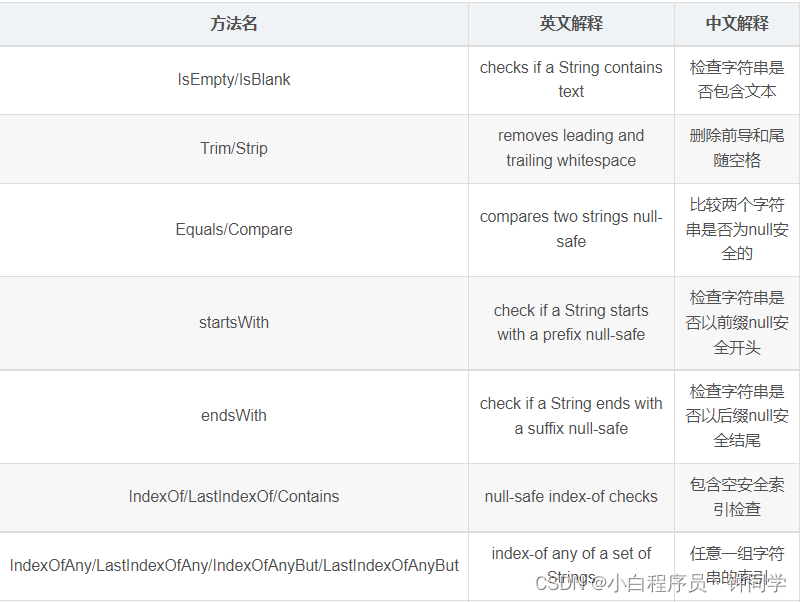
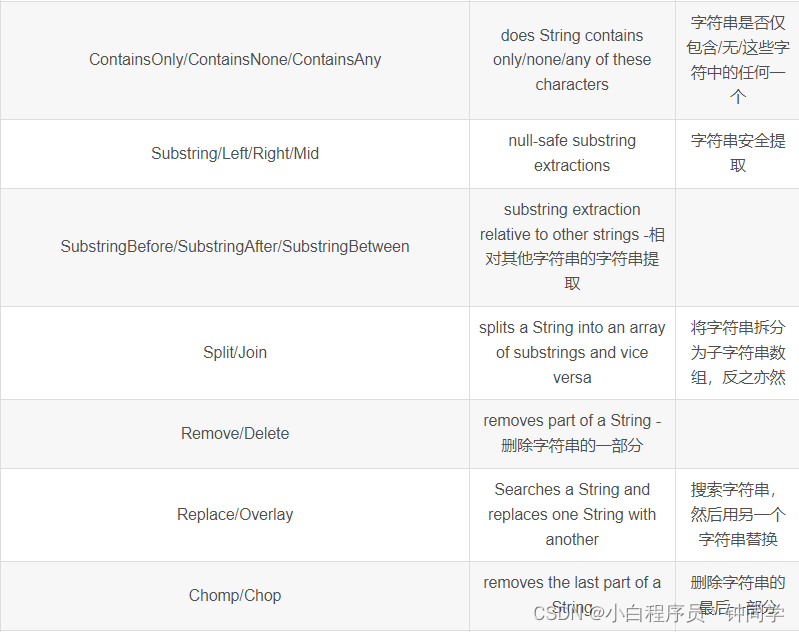
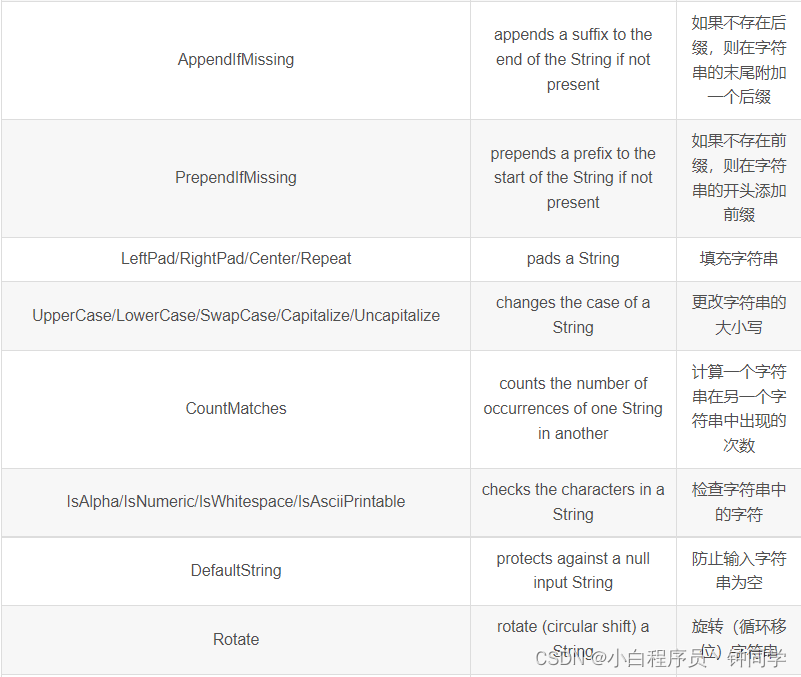
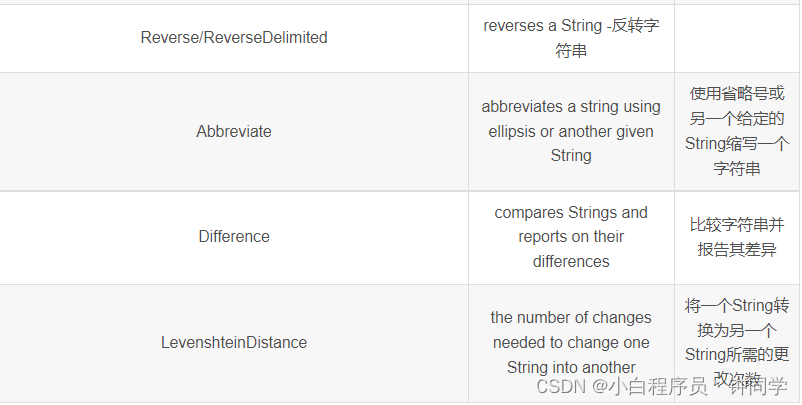 也可以去StringUtils (Apache Commons Lang 3.14.0 API)去查看一下其他的用法。
也可以去StringUtils (Apache Commons Lang 3.14.0 API)去查看一下其他的用法。
